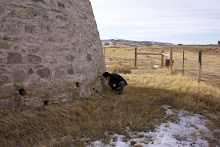Living as late in the day as we do, it is readily accepted that definitions of art have burst past the point of recognition. Most can admit that we no longer need an art “object” as a locus for discussion. “Art” may take many forms. Nevertheless, inasmuch as art can be discussed at all, one must ask what the boundaries of “art” are (even if those boundaries may not exist). The recent fiasco surrounding Yale art major Aliza Shvarts’ senior project, which involved the intentional and repeated inducement of miscarriages over a nine month period, raises such questions.
After the story broke on April 17th, it was quickly debunked as a hoax by Yale’s administrating authorities. Lest we turn away too soon, however, Shvarts quickly retorted that it wasn’t really a hoax after all, and that she had just told Yale officials what they had wanted to hear.[1] Although we may tend to believe whatever we find most settling about the whole affair, the actual truth is at least a little bit obscured. And this ambiguity, of course, is precisely the point of the whole exercise.
If we take the story as truth (which we certainly don’t need to do), then it still leaves unresolved questions about the status of a “work” of art. I certainly don’t mean to resolve any of these questions here but these questions are still pertinent to a discussion of the status of art, or the reports of its demise.[2]
While the “art” did consist of some physical material – a documentation consisting of blood, Vaseline and film – it seems that the documentation is almost irrelevant. The material display doesn’t really add anything to the central provocative claim. The real power of the exercise is that someone would induce abortion for art’s sake. If I’m correct in seeing the art in this way, then we’re left wondering what art is: can art be simply a claim, a declaration? If Schvarts had simply turned in her declaration of intentionally induced miscarriage, would she still get a passing grade (and what grade is she getting anyway)? Obviously, performance art doesn’t rely on physical material for its status as art, but its hard to see this as performance, either. The behaviors in question were not “performed” in any traditional sense, because they lacked an audience (we might judge the art as a work of film, but it seems, again, that any power the project conveys is not tied to its status as film at all). Can art be reduced to a provocative statement, which is almost (though not entirely) absent an element of craft?
If we take the whole affair as hoax, then perhaps the claim to art is a little stronger. We’re all familiar with the suggestion that art is a lie that tells the truth. But how important is truthfulness to the equation? If it is a hoax, then we have art as lie – but only that.
If its not a hoax, then it is art as the report of strange behavior. And we can here think of various comparable behaviors. Might I claim to my students that being drunk while lecturing is an important aesthetic experience for them? Shall they counter that a state of deep existential depression precluding an ability to turn in a final paper is an appropriate culmination to an introduction to philosophy course? Can one simply do something strange, dangerous, or immoral, and then tell people that it was art. Is that enough? If this is our guideline, there are a lot of behaviors that qualify, but that we would never ordinarily think of as art. And what does odd behavior have in common with, for instance, Gainsborough’s Blue Boy, such that they would both fall under the category “art”? Do we perhaps need a new name? Is it important that we make these distinctions at all?
As a hoax, the events have a stronger claim. And as Schvarts has made clear in her own statements, the art is about (inasmuch as a set of behaviors can be “about” anything) the resultant ambiguity: we don’t know if the blood is the result of normal menstrual cycle, or an aborted fertilized egg, or animal blood she hurriedly gathered together the night before the project was due. Throughout all of this, we’re still left with something troubling: art as ambiguous publicity stunt.
Even if everyone is famous for fifteen minutes, it doesn’t necessarily follow that each of those fifteen minutes is a work of art. Does art happen whenever the public is briefly shocked, confused, or amused (and could we then submit Larry Craig’s behavior in an airport bathroom as art)? Or, perhaps, only when the public is shocked and confused by something which turns out not to have been true? I fear there’s a central confusion here. We know that art can be shocking. Picasso’s Guernica is proof of that. But that doesn’t mean that art resides in the shock. Guernica was also a painting. Absent the painting, what is left that we can identify, and do we need to identify a “work” of art anyway?
I am certainly not in any position to resolve any of these questions, and so, for the time being, I’ll leave it all open for discussion. Bringing up a lot of irresolvable questions – that can be my “art”.
[1] Schvarts’ explanation: http://www.yaledailynews.com/articles/view/24559
[2] Here’s a link to the original story: http://www.yaledailynews.com/articles/view/24513
Monday, April 21, 2008
Art as Hoax, Hoax as Art: A commentary on Aliza Shvarts and the meaning of art
Subscribe to:
Post Comments (Atom)

0 comments:
Share your views